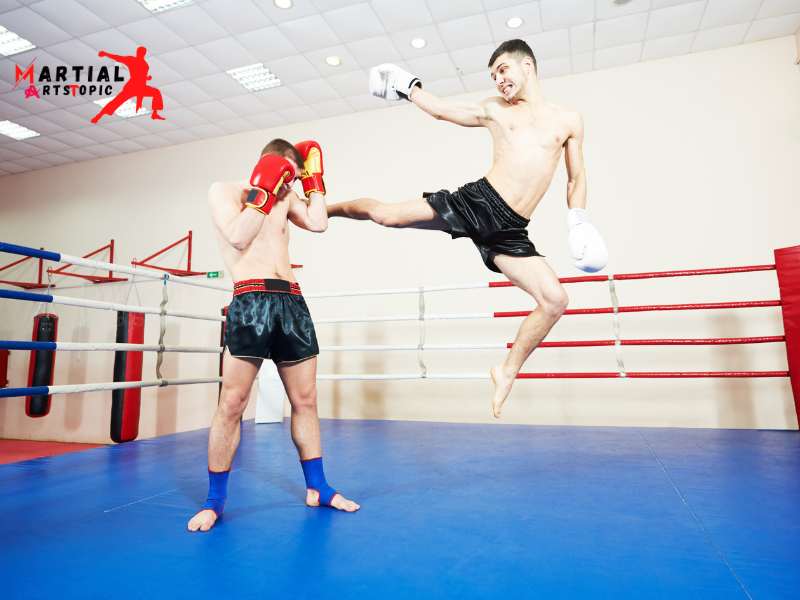
Muay Thai Kicks for Beginners: Step-by-Step Guide
Muay Thai Kicks for Beginners: Step-by-Step Guide Are you eager to learn the art of Muay Thai? One of the fundamental techniques you need to master is the art of Muay Thai kicks. Muay Thai kicks are not only powerful and effective, but they also require proper technique and form to ensure maximum impact. In this step-by-step guide, we will walk you through the basics of Muay Thai kicks, helping you develop a firm foundation in this dynamic martial art.
Start with the basic stance
Before you begin practicing Muay Thai kicks, it is essential to establish a solid foundation with the basic stance. Stand with your feet shoulder-width apart, slightly angled, and your knees slightly bent. Keep your hands up, protecting your face, and maintain a balanced posture.
Master the roundhouse kick
The roundhouse kick is one of the most common and devastating techniques in Muay Thai. To execute this kick, follow these steps:
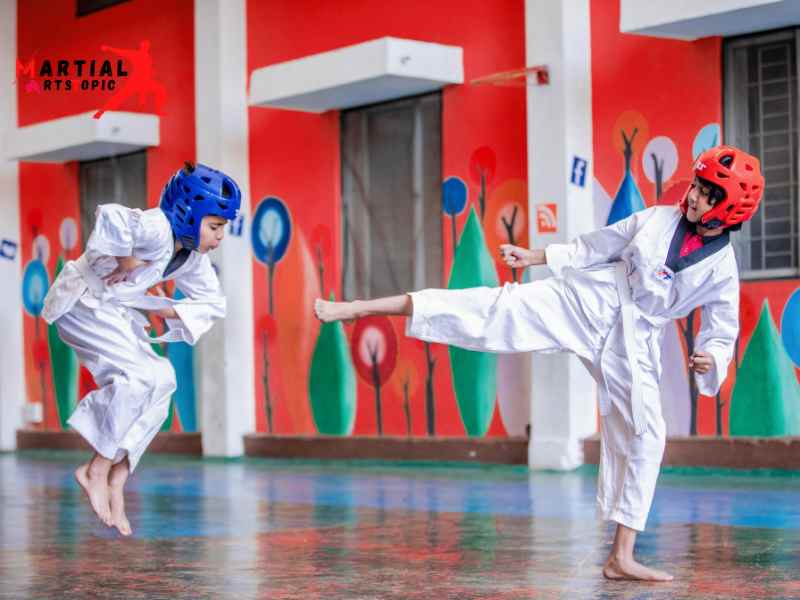
- Lift your lead leg: Begin by lifting your lead leg off the ground, keeping your knee bent and your foot flexed.
- Rotate your hips: As you lift your lead leg, rotate your hips toward your kick. This rotation generates power and momentum for your kick.
- Extend your leg: Extend your leg towards your target, aiming to strike with your shinbone. Keep your leg straight and locked at the knee for maximum impact.
- Snap back: After making contact with your target, quickly snap your leg back to regain your balance and prepare for the next move.
Practice the push kick
Also known as the teep kick, the push kick is a versatile and effective technique in Muay Thai. Here’s how to perform it correctly:
- Lift your rear leg: Start by lifting your rear leg, bending your knee and bringing it towards your chest.
- Extend your leg forward: Extend your leg forward, aiming to strike with the ball of your foot. Your leg should be fully extended, pushing your opponent away.
- Push your hip forward: As you extend your leg, push your hip forward to generate more power behind your kick. This will not only add force but also help maintain balance.
- Recoil and reset: After executing the push kick, recoil your leg and quickly reset back to your basic stance.
Explore other Muay Thai kicks
Once you have mastered the roundhouse kick and the push kick, you can start exploring other Muay Thai kicks, such as the front kick, the knee strike, and the spinning back kick. These kicks require more advanced techniques and coordination, so make sure to practice them under the guidance of a qualified instructor.
So, what are you waiting for? Put on your training gear, step into the gym, and start perfecting your Muay Thai kicks today!
Top 10 Muay Thai Kicks You Need to Know
Top 10 Muay Thai Kicks You Should mainstream Thai, also known as the “Art of Eight Limbs,” is a combat sport that originated in Thailand. The use of fists, elbows, knees, and kicks characterizes it. Among these techniques, kicks play a crucial role in a fighter’s arsenal.
- Roundhouse Kick: The most basic and commonly used Muay Thai kick is the roundhouse kick. This kick involves rotating the hips and pivoting on the supporting foot to generate maximum power. Aim to strike with the shin, targeting your opponent’s ribs or head.
- Teep Kick: Also known as the push kick, the teep kick is a versatile technique used for both offense and defense. This kick is executed by thrusting the ball of the foot into the opponent’s midsection, creating distance and disrupting their balance.
- Front Kick: The front kick is a swift and effective kick used to strike your opponent’s face or chest. It involves extending the leg straight out, keeping the foot flexed, and striking with the ball of the foot.
- Axe Kick: The axe kick is a devastating technique that aims to strike the opponent with the heel of the foot. This downward strike is particularly effective against taller opponents and can cause significant damage if executed correctly.
- Spinning Back Kick: As the name suggests, the spinning back kick involves rotating your body and striking the opponent with your heel. This kick is unpredictable and powerful, often catching opponents off guard.
- Low Kick: The low kick, also known as the leg kick, is aimed at the opponent’s thigh. This technique is highly effective in destabilizing your opponent’s base, making it harder for them to counter-attack.
- Head Kick: The head kick is a high-risk, high-reward technique that can end a fight instantly. By targeting the opponent’s head, you aim to deliver a knockout blow using the shin or instep of the foot.
- Switch Kick: The switch kick involves switching your stance mid-kick to generate additional power. This technique can confuse your opponent and leave them vulnerable to a powerful strike.
- Hook Kick: The hook kick is an unorthodox technique that involves curling the leg around your opponent’s defense and striking with the heel of the foot. This kick can catch opponents by surprise and create openings for follow-up attacks.
- Body Kick: The body kick targets the opponent’s midsection, aiming to weaken their core and potentially score points in a competitive match. They can execute this kick from various angles and with different parts of the leg.
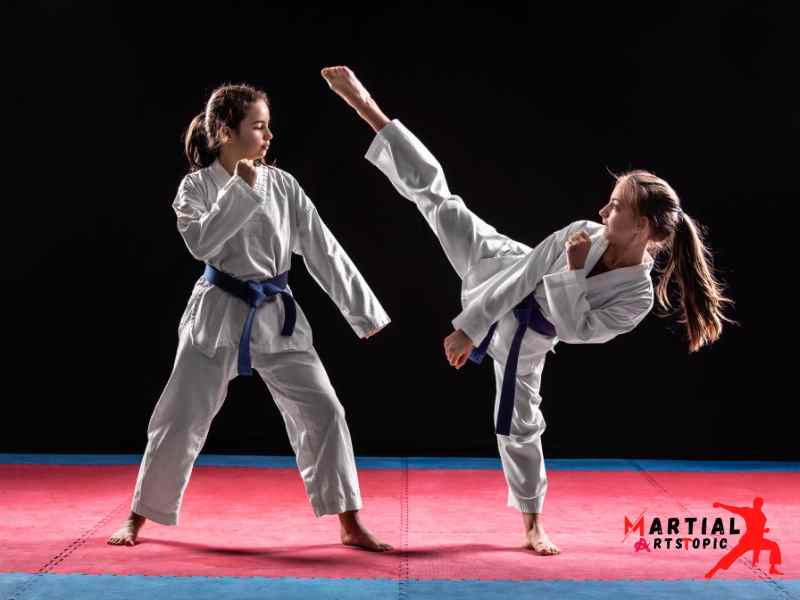
Mastering these top 10 Muay Thai kicks will not only enhance your offensive capabilities but also improve your defensive skills. Remember to train under the guidance of experienced instructors and prioritize safety.
So, whether you’re a beginner looking to learn the basics or an experienced fighter aiming to refine your techniques, incorporating these Muay Thai kicks into your training regimen will undoubtedly elevate your skills in the ring. Practice diligently, stay disciplined, and unleash the power of Muay Thai kicks in your next fight!
How to Improve Your Muay Thai Kicks: Tips and Techniques
If you’re a Muay Thai enthusiast, you know that kicks are a crucial aspect of this martial art. They require precision, speed, and power to be effective. Whether you’re a beginner looking to improve your technique or an experienced practitioner aiming to take your kicks to the next level, this comprehensive guide will provide you with valuable tips and techniques to enhance your Muay Thai kicks.
Master Proper Technique
To improve your Muay Thai kicks, it’s crucial to master the proper technique. Focus on the following key elements:
- Foot Positioning: Ensure that your supporting foot is angled at around 45 degrees, while your kicking leg is chambered and ready to strike. This positioning maximizes power and balance.
- Hip Rotation: Generate power by effectively rotating your hips while kicking. This movement adds force to your strikes, making them more impactful.
- Snappy Extension: Extend your leg explosively upon impact, retracting it quickly to minimize the risk of counterattacks.
Strengthen Your Legs
Building strength in your legs is essential for developing powerful kicks. Incorporate the following exercises into your training routine:
- Squats: Perform squats regularly to strengthen your quadriceps, hamstrings, and glutes. Start with bodyweight squats and progressively increase the resistance as you improve.
- Lunges: Lunges target the muscles in your thighs and glutes. Perform forward, reverse, and side lunges to develop overall leg strength and stability.
- Plyometric Exercises: Incorporate plyometric exercises like box jumps and jump squats to enhance explosive power in your kicking muscles.
Flexibility and Mobility
Improving your flexibility and mobility is crucial for executing high kicks with ease. Incorporate the following stretches into your warm-up routine:
- Hip Flexor Stretch: Kneel on one knee, with your other leg bent at a 90-degree angle in front of you. Lean forward, stretching the hip flexors. Repeat on both sides.
- Hamstring Stretch: Sit on the floor with one leg extended and the other bent. Reach forward, trying to touch your toes. Hold the stretch for 20-30 seconds on each side.
- Quadriceps Stretch: Stand upright and grab your ankle, pulling it toward your glutes. Maintain your balance and ensure your knees are close together. Repeat on both sides.
Practice Drills
Regularly incorporating specific kicking drills into your training sessions will help improve your technique and overall performance. Some effective drills include:
- Heavy Bag Kicks: Practice a variety of kicks on a heavy bag, focusing on proper technique and speed. Start slowly and accumulate the power of your strikes.
- Pad Work: Partner up with a training partner or coach and work on pad drills. This allows you to practice different combinations and receive real-time feedback on your technique.
- Shadow Boxing: Visualize an opponent in front of you and practice your kicks in the air. Focus on correct form, balance, and speed.
The Different Types of Muay Thai Kicks
Muay Thai, also known as the “Art of Eight Limbs,” is a combat sport that originated in Thailand. It is renowned for its wide array of devastating strikes, with kicks being one of its most signature techniques.The different types of Muay Thai kicks that every practitioner should master. From the bone-crushing Roundhouse kick to the lightning-fast Flying Knee, each kick has its unique purpose and execution.
- Roundhouse Kick: The Roundhouse kick is one of the most powerful and popular kicks in Muay Thai. It involves pivoting on the supporting leg and swinging the other leg in a circular motion to strike the target with the shin. This kick can cause immense damage, especially when aimed at the opponent’s torso or head.
- Push Kick (Teep): The Push Kick, also known as the Teep, is a versatile kick used for both offense and defense. It involves extending the leg straight and forcefully pushing the opponent away. The Push Kick can be utilized to keep opponents at bay, disrupt their balance, or even knock them down if executed with enough power.
- Front Kick (Teep): Similar to the Push Kick, the Front Kick, or Teep, is another effective Muay Thai kick. It involves thrusting the foot forward to strike the opponent’s midsection or face. We know the Front Kick for its speed and precision, making it an excellent tool for creating distance and setting up other strikes.
- Knee Strikes: Muay Thai is famous for its devastating knee strikes. It can execute these strikes from various angles and can cause significant damage to the opponent’s body. Knee strikes are particularly effective in close-quarters combat, allowing the fighter to generate power from the hips and transfer it into the strike.
- Flying Knee: The Flying Knee is a spectacular technique that involves leaping into the air and driving the knee forward to strike the opponent. This explosive strike can catch opponents off guard and deliver tremendous force, making it a crowd-pleasing move in Muay Thai fights.
- Spinning Hook Kick: The Spinning Hook Kick is a flashy yet powerful kick that requires agility and timing. It involves spinning the body and extending the leg in a hooking motion to strike the target with the heel or shin. They often used this kick as a surprise attack or a counter-move to catch opponents off balance.
- Spinning Back Kick: Similar to the Spinning Hook Kick, the Spinning Back Kick is executed by spinning the body and striking the opponent with the heel or sole of the foot. We know this kick for its speed and force, and it can be devastating when landed cleanly on the opponent’s midsection.
- Head Kick: The Head Kick is a high-risk, high-reward technique that aims to strike the opponent’s head with the shin or instep. It requires precision, timing, and flexibility to execute correctly. A well-placed Head Kick can result in a knockout, making it an unpredictable and formidable weapon in Muay Thai.
- Axe Kick: The Axe Kick is a downward strike that aims to hit the opponent with the heel or sole of the foot. This kick is often used to target the opponent’s collarbone, arm, or shoulder. The Axe Kick can be a powerful tool to break an opponent’s defense or create openings for follow-up strikes.
- Low Kick: The Low Kick, also known as the Leg Kick, is a technique that targets the opponent’s thigh or calf. It aims to weaken the opponent’s leg, reduce their mobility, and potentially limit their kicking ability. Low Kicks are frequently utilized to wear down opponents and set up other strikes.
- Switch Kick: The Switch Kick involves switching the position of the feet swiftly and delivering a kick with the rear leg. This kick is deceptive and can catch opponents off guard due to the sudden change in stance. The Switch Kick can be used to confuse opponents, create openings, or counter their attacks effectively.
Mastering the various types of Muay Thai kicks requires consistent training, discipline, and proper technique. These kicks are not only powerful but also require precision and timing to execute effectively. Whether you are a beginner or an experienced practitioner, incorporating these kicks into your arsenal will undoubtedly enhance your overall Muay Thai skills and make you a formidable fighter in the ring.
So, if you are looking to take your Muay Thai game to the next level, don’t underestimate the importance of mastering these different types of kicks. From the bone-crushing power of the Roundhouse kick to the lightning-fast Flying Knee, each kick has its unique purpose and can be a significant change in the world of Muay Thai. Practice diligently, stay focused, and let your kicks do the talking in the ring.
Muay Thai Kickboxing: Kicking Techniques for Self-Defense
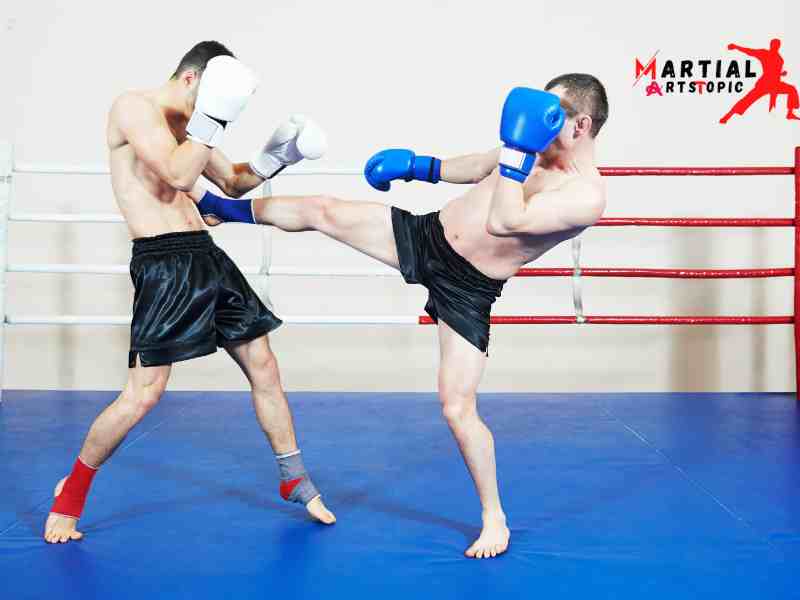
Muay Thai Kickboxing: Mastering Powerful Kicking Techniques for Self-Defense In the world of martial arts, Muay Thai kickboxing stands out as one of the most effective and dynamic combat sports. Renowned for its devastating kicks, Muay Thai is not only a highly effective self-defense system but also an excellent way to improve physical fitness and mental discipline.
Muay Thai, also known as the “Art of Eight Limbs,” utilizes punches, elbows, knees, and, of course, kicks to deliver a comprehensive striking arsenal. Among these techniques, the kicks play a crucial role in both offensive and defensive strategies. The precision, power, and versatility of Muay Thai kicks make them an essential tool for fighters and an effective means of self-defense for individuals seeking to protect themselves in real-world situations.
Let’s start by looking at some of the fundamental Muay Thai kicks:
- The Roundhouse Kick: This is the most iconic kick in Muay Thai. It involves pivoting on the lead foot while swinging the rear leg in a circular motion to strike the target with the shin bone. They can execute the roundhouse kick to various targets, including the thighs, body, and head, making it a versatile weapon in any situation.
- The Push Kick: Also known as the teep, the push kick is a front kick that is used to create distance, disrupt an opponent’s balance, and maintain control in the ring. It involves extending the leg straight out, pushing with the ball of the foot to strike the opponent’s torso or legs. They can deploy the push kick as both an offensive strike and a defensive maneuver.
- The Axe Kick: This powerful downward strike is designed to target an opponent’s head or shoulders. The axe kick involves raising the leg high in the air before driving the heel downward with full force. This technique can be especially effective when an opponent is in a crouched position, providing an opportunity to strike with maximum impact.
- The Spinning Back Kick: As the name suggests, the spinning back kick involves rotating the body and striking the opponent with the heel of the foot. This technique can catch opponents off guard, as the movement is less predictable. It requires excellent timing and precision but can deliver devastating results when executed correctly.
- The Low Kick: Aiming at the opponent’s legs, the low kick targets the thighs or calves with a powerful strike using the shin. This technique is effective for wearing down an opponent’s mobility and balance, making it harder for them to counterattack. The low kick is a staple in Muay Thai and can cause significant damage over time.
To master the art of Muay Thai kicks, it is essential to focus on technique, conditioning, and practice. Developing proper form and understanding the mechanics behind each kick will maximize their effectiveness. Moreover, incorporating strength and flexibility exercises into your training routine will enhance your kicking power and range of motion.
So, if you are looking to boost your self-defense skills, improve your physical fitness, and gain mental discipline, Muay Thai kickboxing is the perfect choice. Embrace the power of Muay Thai kicks and unlock the secrets of this ancient martial art.
Common Mistakes to Avoid When Executing Muay Thai Kicks
Muay Thai is a dynamic and exciting martial art that relies heavily on powerful kicks. Mastering the art of executing Muay Thai kicks is essential for any practitioner looking to improve their techniques and overall performance in the ring. However, many beginners and even experienced fighters often make common mistakes that can hinder their progress. In this blog post, we will discuss some of the most prevalent mistakes to avoid when executing Muay Thai kicks, helping you refine your technique and take your skills to the next level.
Lack of Proper Warm-up
One of the most common mistakes people make before executing Muay Thai kicks is skipping the warm-up. Neglecting to warm up your muscles can lead to injuries and decreased performance. Start your training session with a proper warm-up routine that includes dynamic stretches, jumping jacks, and light cardio exercises. This will increase blood flow, loosen your muscles, and prepare your body for the intense kicks ahead.
Poor Foot Positioning
Foot positioning plays a crucial role in executing powerful and accurate Muay Thai kicks. Many practitioners make the mistake of not aligning their supporting foot correctly. We should turn your supporting foot slightly outward, with the heel planted firmly on the ground. This allows for better balance, stability, and optimal power generation when delivering kicks.
Neglecting Hip Rotation
Generating power in Muay Thai kicks relies heavily on proper hip rotation. A common mistake is neglecting to rotate the hips fully during the kick, resulting in reduced power and compromised technique. To execute powerful kicks, focus on engaging your core and rotating your hips explosively as you strike. This will maximize the force behind your kicks, making them more effective and challenging to defend against.
Inadequate Hip Flexibility
Flexibility is vital in executing Muay Thai kicks with precision and effectiveness. Many practitioners overlook the importance of hip flexibility, which can limit their range of motion and hinder the execution of high kicks. Incorporate regular stretching exercises, such as hip openers and dynamic stretches, into your training routine to improve your hip flexibility and enhance your kicking abilities.
Lack of Proper Balance and Weight Distribution
Maintaining proper balance and weight distribution is essential for executing Muay Thai kicks with accuracy and power. Some fighters make the mistake of leaning too far back or forward during their kicks, compromising their stability and leaving them vulnerable to counterattacks. Focus on keeping your body centered and distributing your weight evenly between your supporting and kicking legs. This will improve your balance, enhance your kicking technique, and enable quicker recovery after each kick.
Over committing to Kicks
While power is crucial in Muay Thai kicks, over committing to a kick can leave you exposed and off-balance. Many fighters make the mistake of putting all their force into a single kick, creating an opening for their opponents to counterattack. Practice controlling your kicks and avoid telegraphing your movements. Remember, it’s better to deliver a series of well-placed and controlled kicks than one powerful but vulnerable strike.
Building Power for Muay Thai Kicks: Essential Training Tips
Building Power for Muay Thai Kicks: Essential Training Tips Muay Thai, also known as the art of eight limbs, is a combat sport that requires a combination of strength, speed, and technique. One of the most iconic and devastating moves in Muay Thai is the powerful kick. Mastering the art of delivering powerful kicks is crucial to becoming a skilled Muay Thai practitioner.
- Strengthen Your Legs: Building powerful kicks start with having muscular legs. Incorporate exercises like squats, lunges, and deadlifts into your strength training routine. These exercises target the muscles in your legs, such as the quadriceps, hamstrings, and glutes, which are essential for generating power and stability in your kicks.
- Improve Flexibility: Flexibility plays a crucial role in executing powerful kicks. Incorporate stretching exercises into your training routine to improve your range of motion. Focus on stretching your hip flexors, hamstrings, and calves, as these muscles are heavily involved in generating power for kicks.
- Master Technique: Proper technique is essential for generating power in Muay Thai kicks. Work with a qualified instructor to learn the correct mechanics of different kicks, such as the roundhouse kick, push kick, and teep. Pay attention to your body positioning, pivot on your supporting leg, and generate power from your hips and core.
- Develop Core Strength: A strong core is the foundation for generating power in any martial arts technique, including kicks. Incorporate exercises like planks, Russian twists, and medicine ball throws to strengthen your core muscles. A strong core will help you transfer power from your lower body to your upper body, resulting in more powerful kicks.
- Plyometric Training: Plyometric exercises are explosive movements that can significantly improve the power of your kicks. Incorporate exercises such as box jumps, jump squats, and clap push-ups into your training routine. These exercises enhance your fast-twitch muscle fibers, allowing you to generate greater force in your kicks.
- Practice Shadow Boxing: Shadow boxing is an excellent way to refine your Muay Thai technique and build power in your kicks. Visualize your opponent and execute different kicking combinations with full force. Focus on maintaining proper form and generating power from your entire body.
- Heavy Bag Training: The heavy bag is one of the best tools for developing power in your kicks. Incorporate heavy bag training into your routine, focusing on perfecting your technique and delivering powerful strikes. Start slowly and accumulate the intensity and speed of your kicks as you become more comfortable.
- Conditioning Drills: Muay Thai kicks require endurance and power. Incorporate conditioning drills into your training routine to improve your overall fitness and stamina. High-intensity interval training (HIIT) workouts, skipping rope, and running are all excellent options to improve your cardiovascular endurance.
Remember, building power for Muay Thai kicks takes time and consistent practice. Incorporate these essential training tips into your routine and stay dedicated to your training. With patience and persistence, you will see improvements in the power and effectiveness of your Muay Thai kicks. Train hard, stay focused, and unleash the power within you.
Safety Tips for Muay Thai Kicks
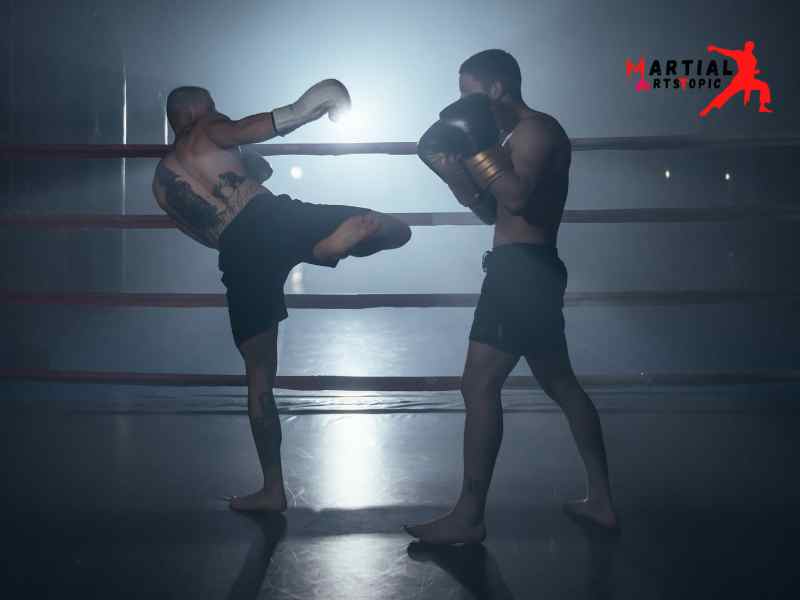
Muay Thai, also known as “The Art of Eight Limbs,” is a combat sport that originated in Thailand. The use of fists, elbows, knees, and shins characterized it. One of the most powerful and signature moves in Muay Thai is the Muay Thai kick. However, executing this technique requires proper form and safety precautions to avoid injuries. In this blog post, we will discuss essential safety tips for Muay Thai kicks to help you train effectively and prevent accidents.1. Warm-Up and Stretching: Before starting any training session, it is crucial to warm up your muscles and stretch properly. This will increase your flexibility and prevent muscle strains or tears during kicks. Incorporate dynamic stretches like leg swings, high knees, and hip circles to prepare your body for the rigorous training ahead.
- Master the Basic Technique: Learning the proper technique for Muay Thai kicks is essential for both your safety and effectiveness. Start with the basic roundhouse kick, also known as the “teep,” and master the correct form, balance, and hip rotation. Practice with a qualified instructor to ensure you are performing the kick with proper technique from the beginning.
- Strengthen Your Legs: Your legs play a vital role in executing powerful Muay Thai kicks. To improve your kicking ability and prevent injuries, focus on strengthening your leg muscles. Incorporate exercises like squats, lunges, calf raises, and leg presses into your training routine. Additionally, using resistance bands or ankle weights can help enhance your leg strength.
- Protect Your Ankles: Ankles are susceptible to injuries during any physical activity, especially while delivering powerful kicks. To protect your ankles, always wear proper ankle support, such as ankle wraps or braces. These provide stability and reduce the risk of sprains or twists.
- Gradual Progression: As with any martial art, it is important to progress gradually in Muay Thai kicks. Avoid pushing yourself too hard or attempting advanced techniques before mastering the basics. Gradually increase the intensity and difficulty of your kicks as your skills improve. This will prevent overexertion and reduce the risk of muscle strains or joint injuries.
- Use Protective Gear: Muay Thai kicks involve a lot of impact, making it crucial to wear appropriate protective gear. Invest in quality shin guards to protect your shins from bruising and potential fractures. Additionally, wearing hand wraps, gloves, and a mouth guard will protect your hands and teeth while practicing kicks.
- Listen to Your Body: Pay close attention to your body’s signals during training. If you experience pain or discomfort while performing kicks, stop immediately and assess the situation. Ignoring pain can lead to serious injuries. Rest, seek medical attention if needed, and allow your body to recover before resuming training.
- Conditioning and Cardiovascular Training: Building cardiovascular endurance and overall conditioning is essential for Muay Thai kicks. Incorporate regular cardio exercises like running, cycling, or skipping rope into your training routine. This will improve your overall fitness level, allowing you to perform kicks with more power and stamina.
- Maintain Proper Balance: Balance is crucial for executing powerful and accurate Muay Thai kicks. Practice balancing exercises such as single-leg stance, yoga poses like tree pose, or wobble board exercises. These will help improve your overall balance and stability, reducing the risk of falls or injuries during kicks.
- Rest and Recovery: Lastly, give your body ample time to rest and recover between training sessions. Over-training can lead to fatigue and increase the risk of injuries. Listen to your body’s need for rest, and incorporate rest days into your training schedule. This will allow your muscles to recover and grow stronger.
Muay Thai Kicks vs. Other Martial Arts Kicks
Muay Thai Kicks vs. Other Martial Arts Kicks: Unleashing the Power When it comes to martial arts, there’s no denying the sheer intensity and effectiveness of Muay Thai kicks. In this article, we will explore the world of Muay Thai kicks and compare them to kicks used in other martial arts disciplines. Get ready to discover why Muay Thai kicks stand out as a force to be reckoned with.

Muay Thai, also known as “The Art of Eight Limbs,” originated in Thailand and has gained worldwide recognition for its devastating kicks. In Muay Thai, kicks are not just attack; they are a way of life. With a unique blend of power, precision, and technique, Muay Thai kicks have proven to be highly efficient in combat situations.
One of the major factors that sets Muay Thai kicks apart from other martial arts kicks is the use of the shins. Unlike many other martial arts where kicks are often executed using the feet or the ball of the foot, Muay Thai fighters condition their shins to become rock-hard weapons. This allows them to deliver bone-crushing kicks that can incapacitate opponents with a single blow.
Another distinguishing feature of Muay Thai kicks is their versatility. They train Muay Thai practitioners to execute kicks at various angles and heights, making it difficult for opponents to anticipate and defend against them. From low kicks that target the opponent’s legs, to mid-range kicks that strike the body, to high kicks that aim for the head, Muay Thai offers a wide range of kicking techniques that can be adapted to different situations.
The Muay Thai roundhouse kick, also known as the “teep,” is a signature move that showcases the power and precision of Muay Thai kicks. The roundhouse kick involves pivoting on the supporting foot and generating tremendous torque to deliver a devastating strike. With proper technique and training, Muay Thai practitioners can generate an incredible amount of force, capable of knocking out opponents or causing severe damage.
In comparison, kicks used in other martial arts disciplines might lack the sheer power and conditioning that come with Muay Thai kicks. While other martial arts focus on speed, flexibility, or acrobatic kicks, Muay Thai prioritizes impact and effectiveness. This emphasis on power makes Muay Thai kicks a formidable weapon in both self-defense scenarios and competitive fighting.
Moreover, Muay Thai kicks are not only about brute force; they also require a high level of technique and precision. Muay Thai fighters train extensively to perfect their kicking techniques, including proper hip rotation, foot placement, and weight distribution. This attention to detail ensures that every kick lands with maximum impact, minimizing the chances of injury to the fighter.
In conclusion
Muay Thai kicks are not only a vital component of this martial art but also a powerful tool for both offense and defense. The various types of kicks, such as the roundhouse kick, push kick, and knee kick, offer distinct advantages and can be used strategically to target different areas of the opponent’s body. Additionally, the combination of speed, power, and technique required to execute these kicks makes Muay Thai a challenging and dynamic combat sport. Whether for self-defense, fitness, or competition, mastering Muay Thai kicks can greatly enhance one’s overall fighting skills and physical conditioning. So, whether you are a beginner or an experienced practitioner, incorporating Muay Thai kicks into your training regimen can lead to improved technique, increased power, and a deeper understanding of this ancient martial art.
